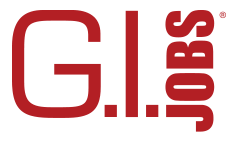It’s likely that the job you are applying for requires a cover letter, to which you may be responding: what is a cover letter and why do I need one? It’s time to discover, unlock and demystify the power of the mighty cover letter.
Job applications are boring, not only for you, but for the potential employer.
It’s a bunch of mandatory information that will end up in a rarely opened file after you’re hired. But what you write in your cover letter is a different story. If it is written well, a cover letter can very much impress a reader. It is easily one of the best, first ways to make a persuasive impression.
To put it simply, a cover letter is a personally yet professionally typed letter to your potential employer. What? Personal yet professional? Confused already? No worries. Start here to know what to include in a cover letter. You can do this.
Find out who is going to be reading your cover letter and address it to that person specifically; use his or her proper name and title (i.e. Mr., Ms., Mrs., Dr., etc.). After the name, type their job title (i.e. Assistant Manager, Manager, HR representative). You may also want to include a courtesy copy for the CEO — whoever’s at the top.
It’s important to name names (and spell them correctly); it will show how interested you are in the position. Now your cover letter will stand out among the many that begin with “To whom it may concern,” or, “Dear Sir or Ma’am.” If you experience any difficulty locating names online, call or email someone who already works at the job location. Contact a receptionist, an assistant, and explain you are applying for a job and want to know to whom you should address the letter.
Get to the point and explain how you are the perfect fit for the position. As quoted from job-hunt.org, “Frame your experience so that it aligns with what the employer needs. Avoid writing a cover letter that restates your entire job history. Instead say, I understand you are looking for X. My experience with X includes….”
Write in a manner that is easily understood — down to earth, even — but maintain an overall impression of seasoned professionalism and competence (which can be accomplished by staying orientated to the job itself for 95 percent of the letter). Know the job you are applying for, do your research. Imagine that the job description is a map of a new town and you want to visit every single attraction. Do this in your cover letter and you can’t really go wrong.
Keep it short — no longer than ¾ of a page. After you explain how ideal you are for the job because of your experience (always tailored to match the description of the job!) and individual goals, close with a crisp sentence like, Thank you for your time and your consideration. Keep it courteous, simple and confident.
Proofread until your eyes bleed. Print it out, mark it up, retype it, print it out again, mark it up again, repeat. It is absolutely unacceptable to submit a cover letter with even one mistake. If you aren’t the best grammarian, find someone who is.
Always, always sign your name. This adds a human quality to the letter. It tells the reader that you are serious, and that you are personable. If the job is requiring you to upload the document through a website, scan your signed letter and convert it to a pdf or Word.doc. Don’t have a scanner? Your local library does.
Need a resume, too? Look no further. Check out these 6 Keys to Resume Effectiveness.




